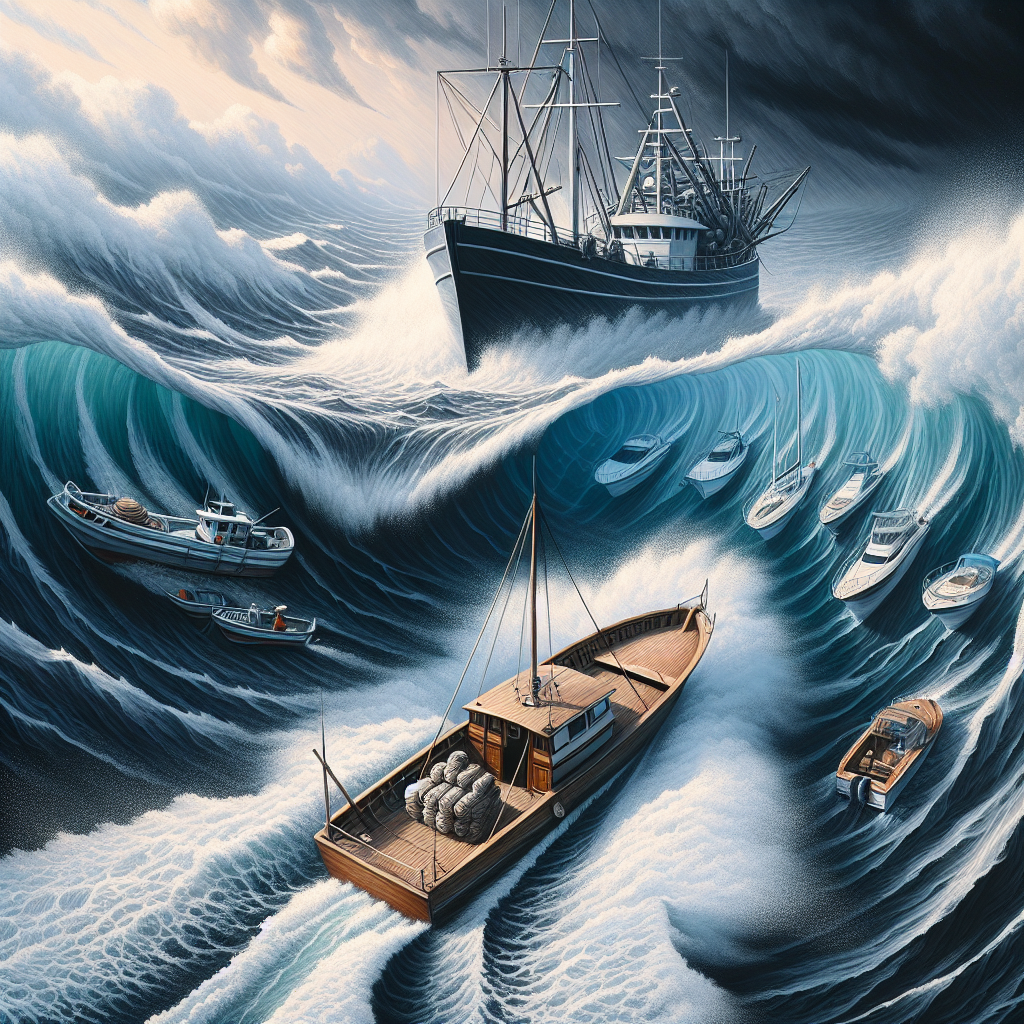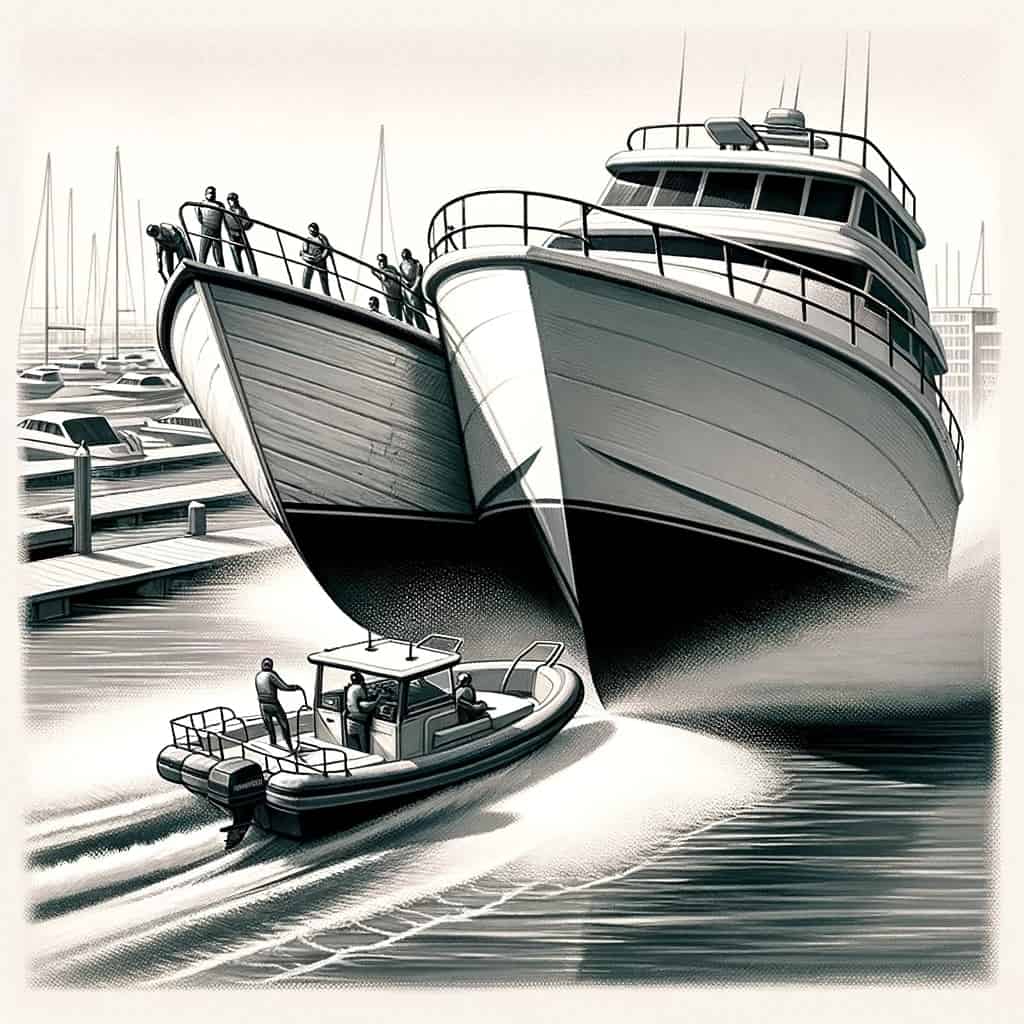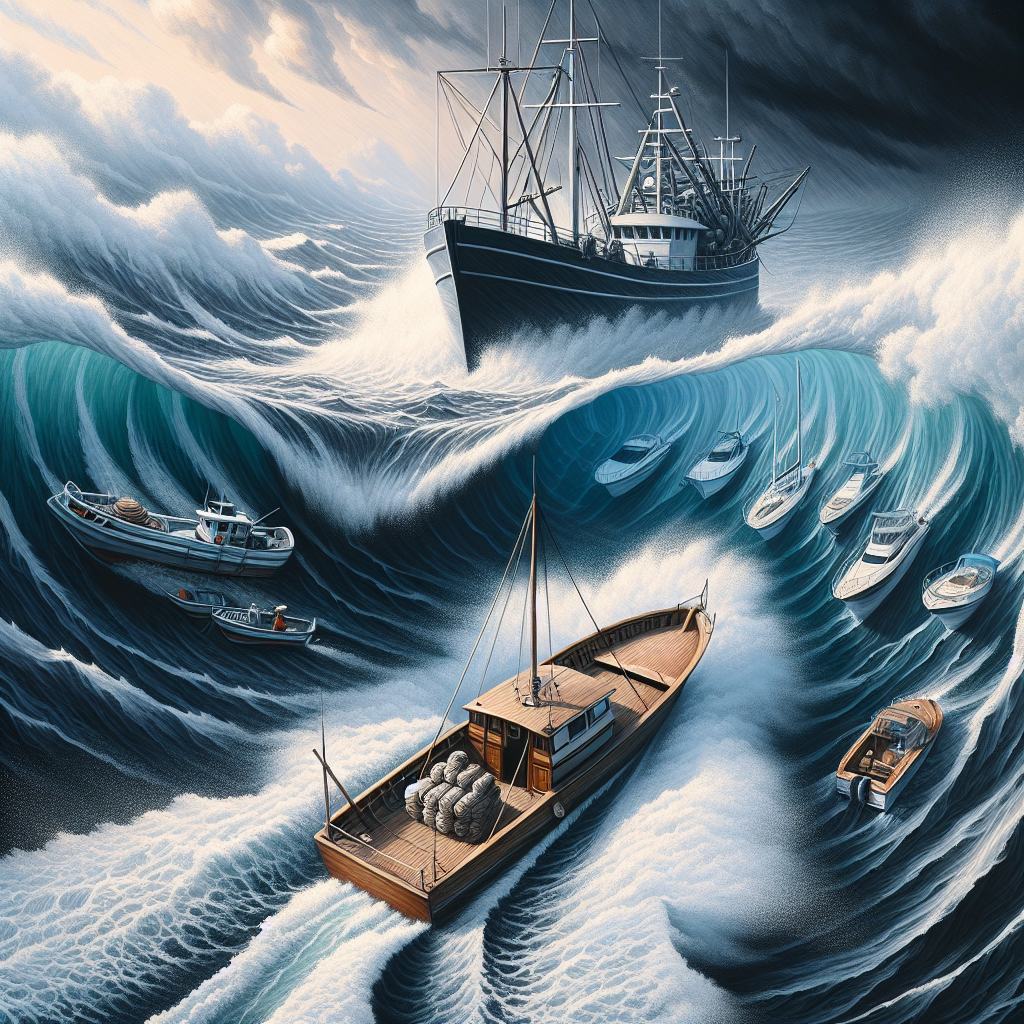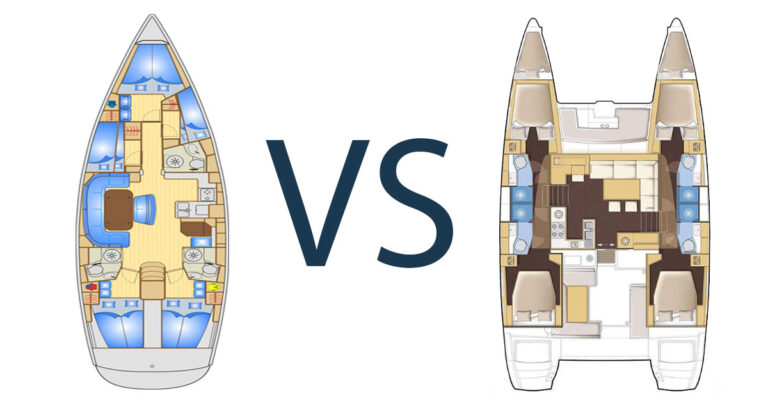How Much Do Boats Weigh Revealed!
So, you’re curious about the weight of boats, huh? Well, as we discuss how much do boats weigh, we’re going to quench your curiosity and offer a detailed look at just how heavy these floating marvels can be.
Whether you’re a seasoned sailor or just a curious landlubber, understanding the weight of boats can be useful knowledge. From small personal watercraft to massive cruise ships, we’ll cover it all. So, get ready to set sail on a weighty adventure as we unveil the surprising facts about boat weights.

Factors Influencing Boat Weight
Boat weight can vary greatly depending on several factors. Understanding these factors is essential when considering the weight of a boat. As we delve further into understanding how much do boats weigh, let’s examine how the choice of material significantly impacts a boat’s weight.
Material of the Boat
The choice of material used to construct a boat plays a significant role in determining its weight. Different materials, such as fiberglass, aluminum, steel, and wood, have varying weights. For instance, fiberglass boats tend to be lighter compared to those made of aluminum or steel.
However, wood can be a heavier material choice. Therefore, the material used in the construction of a boat directly affects its overall weight.
Size of the Boat
The size of the boat is another crucial factor that affects its weight. As a general rule, larger boats tend to be heavier compared to smaller ones. The added length, width, and height of a boat contribute to its overall weight.
The larger the boat, the more materials are required for its construction, including added reinforcement and structural components, which contribute to increased weight.
Type of the Boat
Different types of boats have specific design characteristics that influence their weight. For example, motorboats are typically heavier due to the presence of an engine, fuel tanks, and other mechanical components.
Sailboats, on the other hand, may have less weight dedicated to propulsion systems, but they often have heavy keels or ballasts for stability. The specific type of boat significantly impacts its overall weight.
Additional Equipment and Features
The inclusion of additional equipment and features on a boat can significantly add to its weight. Equipment such as fishing gear, navigation systems, and water toys, as well as features like cabins, lounges, and electrical systems, contribute to the overall weight.
It is essential to consider these additions when estimating the weight of a boat, as they can vary widely depending on personal preferences and intended use.
Understanding Boat Displacement
Boat displacement refers to the weight of the water that the boat displaces when it is afloat. Understanding displacement is crucial in evaluating the weight and performance characteristics of a boat. Here are some key concepts related to boat displacement:
Concept of Boat Displacement
Boat displacement is the amount of water that a boat pushes aside when it is floating. The weight of the water displaced is equal to the weight of the boat. It is an important consideration because it affects the buoyancy, stability, and overall performance of the vessel.
Displacement vs Weight
While boat displacement and boat weight are related, they are not the same thing. Displacement refers to the weight of the water displaced by the boat, whereas boat weight refers to the mass of the boat itself. It is important to differentiate between these two concepts because they have different implications for boat performance and handling.
Factors Affecting Displacement
Several factors influence boat displacement. The shape and design of the boat’s hull, including its length, width, and depth, play a significant role. A boat with a larger hull volume will typically have higher displacement.
Additionally, the materials used in the boat’s construction and the weight of any added equipment or features also affect displacement. It is essential to consider these factors when evaluating the displacement and weight of a specific boat.
Weighing Small Boats
Determining The weight of small boats, such as kayaks and canoes, is relatively straightforward. Here are some considerations when weighing small boats:
Typical Weights of Kayaks
Kayaks can vary in weight depending on their design, material, and intended use. Generally, recreational kayaks range from 30 to 60 pounds (13.6 to 27.2 kilograms), while touring or sea kayaks can weigh between 45 and 75 pounds (20.4 to 34 kilograms).
Whitewater kayaks, designed for more extreme conditions, tend to be lighter, weighing around 30 to 50 pounds (13.6 to 22.7 kilograms).
Typical Weights of Canoes
Canoe weights also depend on various factors, such as the material used and the design. Aluminum canoes are typically heavier, weighing around 60 to 75 pounds (27.2 to 34 kilograms), while fiberglass canoes are lighter, ranging from 40 to 60 pounds (18.1 to 27.2 kilograms).
Canoes made from more exotic materials like Kevlar or carbon fiber can weigh as little as 30 to 50 pounds (13.6 to 22.7 kilograms).
Influence of Material and Design on Small Boat Weight
The choice of material and design greatly impacts the weight of small boats. Kayaks and canoes made from lighter materials like carbon fiber or fiberglass will generally weigh less compared to those constructed from heavier materials like aluminum or wood.
The design, including the shape and thickness of the hull, also affects the weight. Sleek and streamlined designs tend to be lighter compared to bulkier, more robust designs.
Weighing Medium-Sized Boats
Medium-sized boats, such as motorboats and sailboats, have different weight considerations. Here are some factors to keep in mind when weighing medium-sized boats:
Weight of Motorboats
The weight of motorboats can vary significantly depending on their size, design, and construction. Smaller motorboats designed for recreational use typically weigh between 1,500 and 5,000 pounds (680 to 2,268 kilograms).
Larger motorboats, capable of accommodating more passengers and featuring additional amenities, can weigh upwards of 15,000 pounds (6,804 kilograms) or more. The weight of motorboats is influenced by the materials used, engine size, and added features.
Weight of Sailboats
Sailboats also have varying weights depending on their size, design and intended use. Smaller sailboats, such as day sailors or dinghies, can weigh between 300 and 1,500 pounds (136 to 680 kilograms). Larger sailboats, including cruisers and catamarans, can range from 10,000 to 30,000 pounds (4,536 to 13,608 kilograms) or more.
The weight of sailboats is influenced by factors such as the length and design of the hull, the size of the sails, and the presence of additional equipment like keels or ballasts.
How Cabin and Other Features Influence Weight
The inclusion of cabins, additional seating, and other features in medium-sized boats contributes to their weight. Cabins, in particular, add considerable weight due to the structural components required for their construction.
Additional seating, amenities like kitchens or bathrooms, and storage compartments also increase the weight. When considering medium-sized boats, it is important to account for the added weight of these features when estimating overall weight.

Weighing Large Boats
Large boats, such as yachts and commercial vessels, have unique weight considerations. Here are some factors to consider when weighing large boats:
Typical Weights of Yachts
Yachts can vary greatly in size and weight, depending on their purpose and design. Smaller luxury yachts may weigh between 30,000 and 100,000 pounds (13,608 to 45,359 kilograms), while larger superyachts or mega yachts can exceed several hundred thousand pounds (136,077 to 272,155 kilograms) or more.
The weight of yachts is influenced by multiple factors, including their length, construction materials, added features, and onboard systems.
Weight Considerations for Commercial Vessels
Commercial vessels, such as cargo ships or passenger ferries, have significantly higher weights due to their size and intended purpose. The weight of these vessels can vary greatly depending on their size and capacity.
Cargo ships can weigh hundreds of thousands to millions of pounds (45,359 to 907,184 kilograms) due to the large amounts of cargo they can carry. Passenger ferries can also be quite heavy, accommodating hundreds or even thousands of passengers.
Weight of Other Types of Boats
In addition to the various sizes and types discussed above, other types of boats have characteristic weights. Here are some examples:
Inflatable Rafts
Inflatable rafts are typically lightweight due to their construction from flexible materials like PVC or urethane-coated fabric. The weight of inflatable rafts can range from 20 to 100 pounds (9.1 to 45.4 kilograms), depending on their size and intended use.
Jet Skis
Jet skis, also known as personal watercraft, are relatively small and lightweight boats designed for individual use. The weight of jet skis typically ranges from 500 to 1,200 pounds (226.8 to 544.3 kilograms), depending on their size and features.
Pontoon Boats
Pontoon boats are known for their stability and spacious deck areas. The weight of pontoon boats can vary depending on their size and construction materials. Smaller pontoons can weigh around 2,000 to 3,000 pounds (907.2 to 1,361.3 kilograms), while larger ones can weigh upwards of 5,000 to 7,000 pounds (2,268 to 3,175.2 kilograms) or more.
Airboats
Airboats are specialized watercraft powered by powerful aircraft engines and featured with a flat-bottomed hull and a large propeller. Due to their unique design and robust construction, airboats tend to be heavier, with weights ranging from 1,500 to 5,000 pounds (680.4 to 2,268 kilograms) depending on their size and propulsion system.
How Weight Affects Boat Performance
The weight of a boat has significant implications for its performance on the water. Here are some ways in which weight affects boat performance:
Effects on Speed
The weight of a boat affects its speed potential. Generally, lighter boats tend to be faster compared to heavier ones. A lighter boat has less mass to propel, allowing it to accelerate quickly and achieve higher speeds. On the other hand, heavier boats require more power and time to reach their maximum speeds. Therefore, weight is a critical factor to consider when speed is a priority.
Effects on Stability
Weight plays a crucial role in the stability of a boat. Generally, boats with higher displacements and more weight are more stable in rough water conditions. The added weight helps resist tipping or rolling, providing a more stable and comfortable experience for passengers.
However, excessive weight may negatively impact stability, especially if it exceeds the boat’s designed capacity or beyond the recommended weight limits.
Effects on Maneuverability
The weight of a boat can also affect its maneuverability. Lighter boats generally have better-handling characteristics, allowing for more precise and responsive maneuvering.
On the other hand, heavier boats may be more challenging to maneuver, especially at low speeds or in tight spaces. The weight distribution within the boat, including the placement of cargo, fuel, and passengers, can also influence maneuverability.
Effects on Fuel Efficiency
The weight of a boat directly impacts its fuel efficiency. Heavier boats require more power to move through the water, resulting in increased fuel consumption. Lighter boats, on the other hand, require less power, leading to better fuel efficiency.
Considering fuel costs and environmental concerns, keeping a boat’s weight in check is essential for optimizing fuel consumption and reducing the carbon footprint.

Transportation and Storage Implications of Boat Weight
The weight of a boat has implications beyond its performance on the water. Here are some considerations regarding the transportation and storage of boats:
Impact on Towing Requirements
The weight of a boat affects the towing requirements for transportation. Towing a heavier boat requires a more powerful vehicle with a higher towing capacity. It is crucial to match the weight of the boat with the capabilities of the towing vehicle to ensure safe and efficient transport.
Considerations for Boat Lifts and Docks
The weight of a boat also impacts the selection and installation of boat lifts and docks. Lifts and docks must be able to support the weight of the boat without compromising safety or stability. Heavier boats may require more robust and expensive lifting and docking systems.
Implications for Long-Term Storage
The weight of a boat is a significant factor to consider for long-term storage. Storing boats for extended periods, whether on trailers or in marinas, requires proper support to prevent hull damage and maintain structural integrity. Boats that are too heavy can put excessive stress on their support systems, potentially causing damage over time.
Proper Weighing Techniques for Boats
Accurate boat weight measurement is essential for various reasons, such as determining towing requirements, calculating displacement, or evaluating performance. Here are some proper weighing techniques for boats:
Use of Boat Scales
Using specialized boat scales is the most accurate method to measure a boat’s weight. Boat scales are designed to handle the weight of boats and provide precise measurements. These scales can be either floor scales or suspended scales, depending on the boat’s size and the available equipment.
Estimating Boat Weight
If a boat scale is not available, it is possible to estimate the weight of a boat by considering its known characteristics and dimensions. This estimation can be done by calculating the volume of the boat’s hull and multiplying it by the density of the material used for construction.
Importance of Accurate Boat Weight Measurement
Accurate boat weight measurement is crucial for various reasons. It ensures compliance with weight-restricted areas or regulations. It enables accurate calculation of a boat’s displacement, which affects buoyancy and stability.
It also helps in determining proper trailer and towing requirements. Accurate boat weight measurement is essential for making informed decisions regarding boat performance, transportation, and storage.
Methods to Reduce Boat Weight
Reducing the weight of a boat can have significant benefits in terms of performance, fuel efficiency, and handling. Here are some methods to reduce boat weight:
Material Choices for Weight Reduction
Choosing lightweight materials, such as carbon fiber or composite materials, in the construction of a boat can significantly reduce its weight. These materials offer strength and durability while reducing the overall mass.
Replacing heavy components with lighter alternatives, such as using aluminum instead of steel or fiberglass instead of wood, can also contribute to weight reduction.
Trimming Down on Non-Essential Features
Evaluating and eliminating non-essential features and equipment can help reduce a boat’s weight. Removing unnecessary items that add significant weight, such as non-essential furniture, outdated electronics, or excessive storage or cabinetry, can make a noticeable difference.
Prioritizing essential features and focusing on a minimalist approach can result in a lighter boat without compromising functionality.
Weight Considerations in Boat Design and Construction
Boat designers and manufacturers can incorporate weight considerations during the design and construction process. By optimizing the design and material choices, boats can be built with weight reduction in mind. Employing advanced construction techniques and technologies can also contribute to lighter and more efficient boats.
By understanding and considering the factors that influence boat weight, boat owners and enthusiasts can make informed decisions about their boat’s performance, transportation requirements, and storage considerations. Proper weighing techniques, along with efforts to reduce boat weight, can lead to enhanced performance, improved fuel efficiency, and a more enjoyable boating experience.
Throughout this exploration of how much do boats weigh, we’ve uncovered the myriad factors that influence the weight of different types of boats, from small kayaks to enormous yachts.






